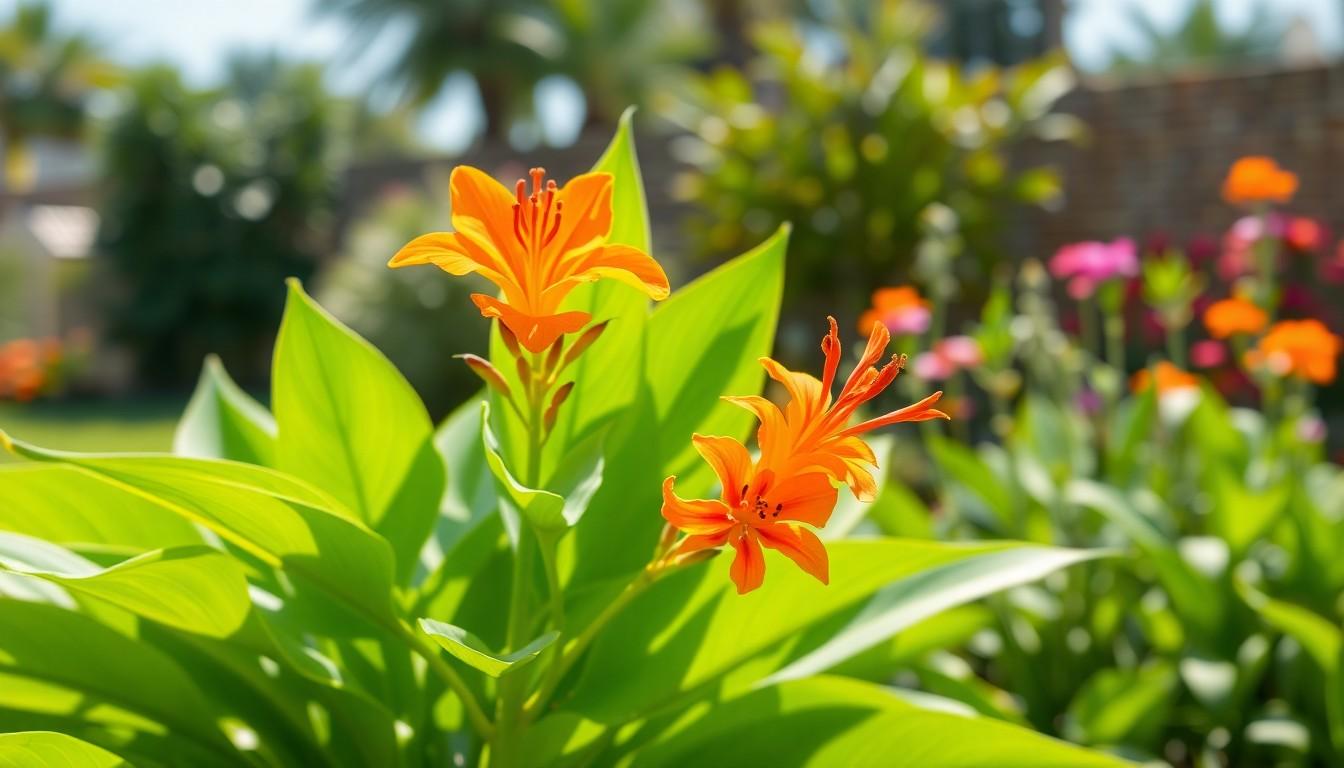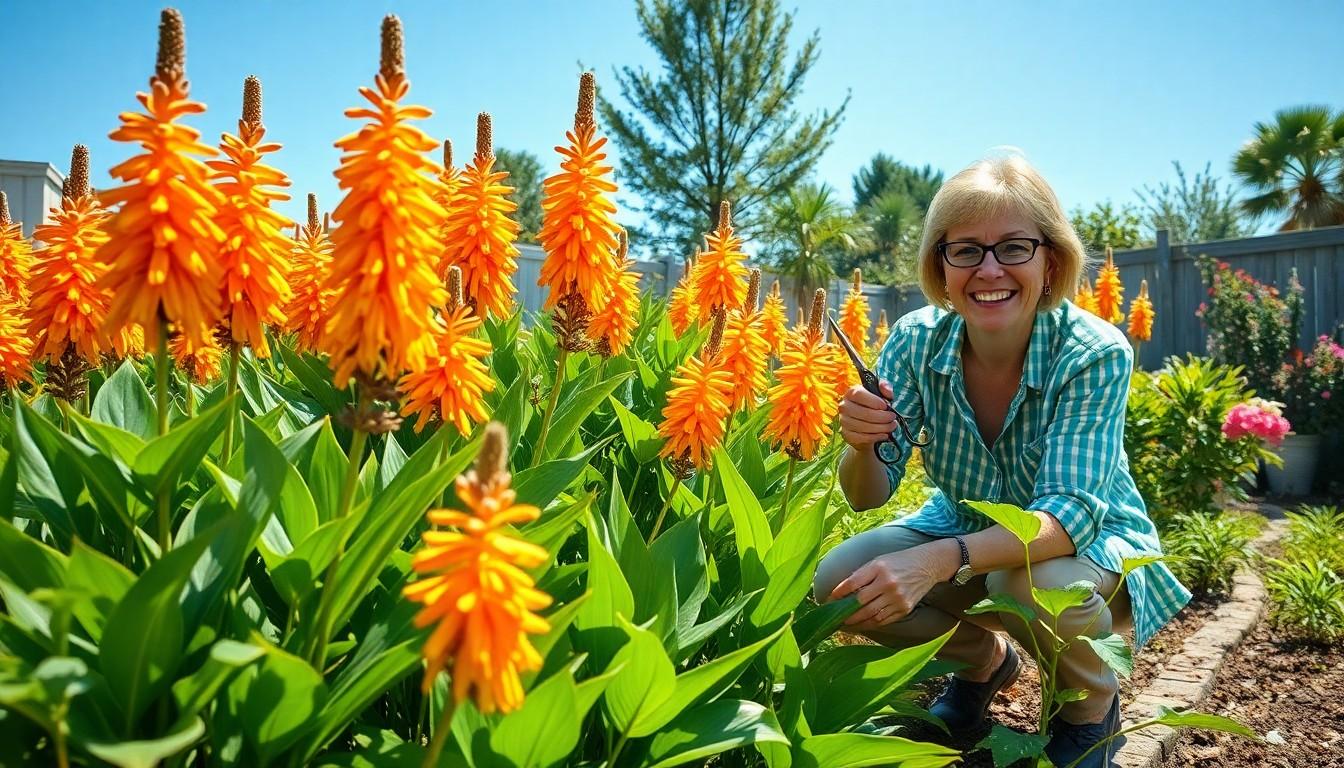Cigar plants are the life of the garden party, boasting vibrant colors and an irresistible charm that can make any outdoor space feel like a tropical paradise. But let’s be honest—keeping these beauties thriving isn’t as easy as lighting up your favorite cigar. With the right care, though, they can flourish and reward you with stunning blooms that’ll have your neighbors green with envy.
Cigar Plant Care
Cigar plants, known for their lush foliage and bold blooms, require careful attention to thrive. Understanding their needs ensures a vibrant display in outdoor spaces.
Overview of Cigar Plants
Cigar plants belong to the Acanthaceae family and typically feature long, tubular flowers ranging from orange to yellow. These perennial plants can reach heights of 3 to 6 feet, showcasing their impressive size. In warm climates, cigar plants grow abundantly throughout the season. They prefer full sun and well-drained soil, making them ideal for sunny gardens. Cultivating cigar plants often results in a rich, tropical feel that enhances any landscape.
Importance of Proper Care
Proper care significantly impacts the health of cigar plants. Regular watering promotes growth and maintains soil moisture. Fertilizing with balanced nutrients every few weeks during the growing season ensures vibrant blooms. Pruning helps shape the plant and encourages bushier growth, enhancing aesthetics. Protecting cigar plants from pests and diseases keeps them thriving, maintaining their natural beauty. Adjusting care routines based on seasonal changes supports long-term vitality and flowering.
Essential Growing Conditions
Cigar plants thrive under specific growing conditions that ensure their vibrancy and longevity. Focusing on light, temperature, and humidity significantly impacts their health and blooming ability.
Light Requirements
Full sun exposure maximizes the growth of cigar plants. These plants prefer at least 6 to 8 hours of direct sunlight daily. Positioning them in a south-facing location enhances their performance and encourages abundant flowering. Insufficient light can lead to leggy growth and fewer blooms. In shaded areas, their vibrant colors fade, affecting overall aesthetics. Regularly monitoring light conditions ensures optimal growth and vibrant blooms.
Temperature and Humidity
Warm temperatures are crucial for cigar plants. They thrive best in temperatures ranging from 65°F to 85°F (18°C to 29°C). When nights become cooler, it’s important to protect them from frost. Humidity levels between 50% and 70% support healthy growth. Dry conditions can lead to stress and hinder blooming. Utilizing misting techniques or placing a humidifier nearby maintains the ideal humidity without overwhelming the plant. Adjusting care based on seasonal temperature variations provides a stable environment for flourishing blooms.
Watering and Feeding
Watering and feeding are essential components of cigar plant care. Proper hydration and nutrient supply significantly impact growth and blooming.
How to Water Cigar Plants
Water cigar plants deeply and infrequently to encourage robust root development. Soaking the soil until water drains from the bottom helps prevent root rot while ensuring adequate moisture. During the growing season, maintain consistent moisture, especially in hot temperatures. Adjust watering frequency based on soil dryness; checking the top inch can indicate needs. In cooler months, reduce watering as growth slows down. Cigar plants prefer well-drained soil that allows water to escape, so avoid waterlogged conditions.
Recommended Fertilizers
Use balanced fertilizers with equal ratios of nitrogen, phosphorus, and potassium, such as 10-10-10 or a slow-release option. Fertilize every four to six weeks during the growing season to promote healthy blooms. Organic compost can also enhance soil quality, supplying nutrients steadily. When applying fertilizers, watering beforehand prevents root burn. Test the soil occasionally to ensure nutrient levels remain balanced, adjusting the fertilizer choice as needed.
Common Pests and Diseases
Cigar plants can face various pests and diseases that impact their health and blooming potential. Protecting these vibrant plants requires vigilance and knowledge of common threats.
Identifying Pests
Aphids often appear as tiny green or black insects clustered on new growth. These pests can cause leaf curling and reduce vigor. Spider mites, identifiable by fine webbing, thrive in dry conditions and lead to yellowing leaves. Whiteflies, resembling small white moths, create a significant problem when they infest the undersides of leaves. Signs of mealybugs include cotton-like masses on stems and leaves. Each pest’s presence can lead to stunted growth and lower flower yield.
Treatment Options
Using insecticidal soap can effectively eliminate soft-bodied insects like aphids and mealybugs. Applying neem oil provides a more natural approach, disrupting the life cycle of multiple pests. Introducing beneficial insects, such as ladybugs, naturally reduces aphid populations. Regularly inspecting plants helps to catch infestations early, making control easier. For diseases like powdery mildew, ensuring adequate air circulation and maintaining proper humidity levels prevents outbreaks. Fungicides can treat existing infections, but preventive measures are key to sustaining plant health.
Pruning and Maintenance
Proper pruning and maintenance contribute significantly to the healthy growth of cigar plants. Regular attention can enhance their blooming potential and overall appearance.
When to Prune
Pruning should occur during the early spring, before new growth begins. This timing allows plants to recover quickly and encourages robust foliage. Minor pruning can also be performed throughout the growing season to maintain shape. Observing the plant’s growth pattern helps determine when additional adjustments are needed. Removing dead or damaged leaves promotes better air circulation and minimizes disease risk.
Techniques for Healthy Growth
Using sharp pruning shears ensures clean cuts and reduces stress on the plant. Cutting just above a leaf node stimulates further branching and encourages bushier growth. Focus on shaping the plant to enhance its natural form while achieving an open structure that facilitates airflow. Thin out crowded stems to prevent disease and pest infestation. After pruning, applying a balanced fertilizer supports recovery and boosts new growth. Consistent observation helps identify any additional needs during the growing season.
Stunning Blooms and Vibrant Colors
Cigar plants can transform any garden with their stunning blooms and vibrant colors. With the right care and attention they can thrive and become a focal point in outdoor spaces. Regular watering balanced fertilization and vigilant pest management are essential for maintaining their health.
By understanding their specific light humidity and temperature needs gardeners can ensure these plants flourish. Pruning and seasonal adjustments further enhance their growth and blooming potential. With commitment and knowledge anyone can enjoy the beauty of cigar plants in their landscape.


